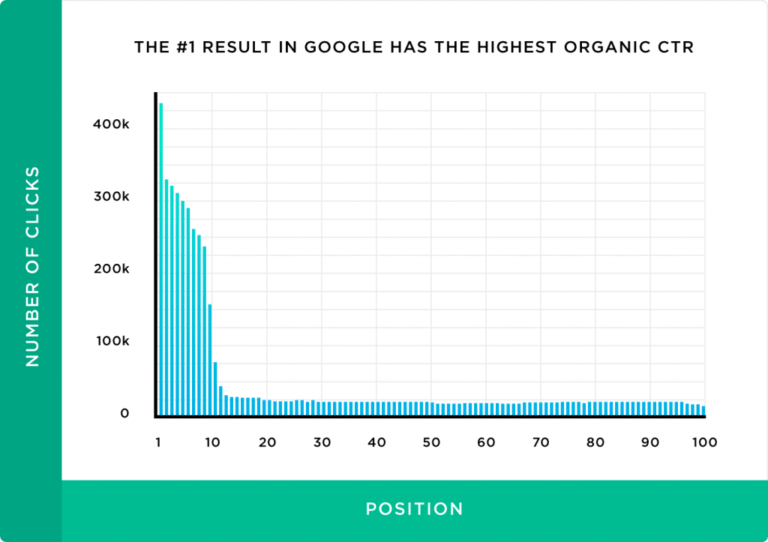
The vast technical infrastructure that’s been needed to start a fund has led to considerable consolidation among those few who can afford to buy in. Cloud finally removes those barriers. Instead of the best tech stack winning, it can again be the best strategies.
getty
- For years, top quantitative hedge funds have invested millions of start-up capital to gain a technical edge.
- Now cloud is leveling the playing field so that the best ideas win.
- The flexibility and extensibility of a cloud-native approach saves on time and start-up capital while also addressing regulatory, security, and talent needs.
- Michael DeAddio, COO and co-founder of systematic hedge fund Dark Forest, explains how his firm is finding new routes to alpha in the cloud.
Hedge funds have often been on the leading edge of technology, as they seek whatever advantage they can in beating the market and their peers.
Funds’ initial infrastructure investments can run into the millions of dollars. Some firms go as far as to buy—well in advance of launching and at considerable start-up expense—a substantial amount of computing power, which they then build into bespoke data centers in places like the trading hubs of northern New Jersey. Then there’s the challenge of constantly maintaining and upgrading that tech to keep their advantage, increase compute power, maintain security, and satisfy regulatory requirements.
What if a fund could skip all that and simply focus on their passion: building alpha and, with it, client value?
Few funds have taken this approach, fully embracing one of the newest and most promising horizons in technology: cloud computing.
That’s what my partners and I decided last year when we launched Dark Forest, the systematic hedge fund where I am COO. Instead of investing in our own infrastructure, we decided to invest in cloud, committing to being fully cloud-native from the start.
When we started this work barely a year ago, we were more than a little nervous. With decades of industry experience, we weren’t worried about knowing what to build, technology- or market-wise. We strongly believed that building this all as a cloud-native hedge fund could work quite well. But in the real world, there’s always the unknown question of “would it work?”
After only seven months of operations, there’s no question now. Utilizing Google Cloud infrastructure, Dark Forest is operating with four prime brokers and more than a dozen executing brokers, enabling daily trading in more than 20 countries and more than 60,000 trades a month.
We discovered that cloud-native infrastructure can not only equal the more traditional infrastructure, but exceed it.
How Dark Forest found upside in the cloud
Table of Contents
Historically, most hedge funds have been understandably cautious about cloud computing. They want to own and control their software and hardware stacks, not only for regulatory reasons but also to protect proprietary techniques and maintain control of their data. At the same time, concerns about security and control have persisted even as cloud services have matured to overcome any legitimate worries.
Even so, many funds have remained wary of the cloud. Accenture surveys estimate that only 8% of such firms have completed their cloud journeys.
Moreover, Accenture found in the same research that many of these firms look at technological cost reduction as “one and done” projects rather than investments to “continuously tune process, technology, and culture to optimize their cost model and return on investment.”
This reflects that even as financial firms turn to the cloud, the vision is too often focused on a finite, short-term goal instead of a broader vision for sustained growth.
What’s most exciting about cloud isn’t what it can do for Dark Forest alone—it’s what cloud can do for every new hedge fund and even the entire financial industry.
At Dark Forest, we followed a different strategy because we recognized that as long as we had enough “quants”—quantitative analysts—to design and implement our financial models, everything else could be handled by a fully cloud-based infrastructure. Our start-up costs would be a fraction of what they would have been with a traditional approach, with benefits well beyond our balance sheet. Cloud allows for substantial time saved by not having to set up an internal network or to order, rack, and stack hardware.
This last piece was especially important during a global pandemic that has made procuring hardware difficult, let alone safely setting it up in a physical location.
What’s more, cost savings have been only part of the benefit. Going cloud-first has helped us to achieve agility and scale that we otherwise would not have been able to attain. Partnering with Google Cloud has allowed Dark Forest to cut our start-up period in half while ramping up our business impacts and responsiveness.
Yet what’s most exciting about cloud isn’t what it can do for Dark Forest alone—it’s what cloud can do for every new hedge fund and even the entire financial industry. Economies have long thrived on the idea of efficient markets. And yet the vast technical infrastructure that’s been needed to start a fund has led to considerable consolidation among those few who can afford to buy in.
Cloud finally removes those barriers and breaks into the concentration of money and resources. Instead of the best tech stack winning, it can again be the best strategies.
Related: New research from Google Cloud reveals five innovation trends for market data
Speed, agility, and alpha in the cloud
At Dark Forest, we currently run all our business-critical applications for portfolio creation, trade signal generation, and risk on Google Cloud. This “NoOps”—or “no operations”—infrastructure allows us to concentrate resources on the people who matter most to us: those focused on alpha generation rather than those in commoditized engineering roles. To achieve this, we needed our cloud provider to meet specific criteria around speed, scale, and availability, which is why, after assessing several options, we chose to work with Google Cloud.
We maintain essentially no compute infrastructure or hardware of our own, instead relying on Compute Engine. The speed at which we can spin up new boxes and the flexible customizations are both huge benefits, enabling us to focus on scaling our analysis efforts—not on IT curation. Similarly, Cloud Storage lets us easily work with huge volumes of data. Using Compute Engine and Cloud Storage in tandem gives us gigabit input/output speeds, making data access nearly instantaneous.
Speaking of connecting data and services, we also needed many different virtual private clouds for various projects and needs. Google Cloud’s flexible network configurations makes setting up our private clouds, and broadcasting routes across them, simple. And support for Equinix Fabric has let us connect easily and securely to our trading vendors. Such connectivity helps overcome many of our historical concerns around security and proprietary control.
Finally, building our own services and tools atop this infrastructure is important, letting us build new applications easily.
If you had asked me two years ago whether you could build a systematic hedge fund running millions of simulations every day without building a single server room and satisfy the ODD process, I would have been hopeful but certainly not sure. Now we know it can be done.
This meant we needed not only to be “in the cloud,” but also to adopt cloud-first development approaches, such as using containerized microservices to agilely assemble applications. Google Kubernetes Engine has been hugely impactful in this regard. The auto-scaling and self-healing cluster cuts down our maintenance time by quite a lot, and Google Cloud makes authentications between nodes, pods, and containers very easy.
Having confidence in the uptime and stability of our Kubernetes cluster has made it possible for us to deploy many of our production workloads in Google Kubernetes Engine. Similarly, some of our lightweight functions run based on simple triggers, such as time of day. Google Cloud features such as Cloud Functions and Cloud Scheduler have helped here, simplifying task management and instilling confidence by letting us centrally manage these efforts and generate detailed logs about runtime history.
Even with our fairly small team, these cloud capabilities have enabled us to launch an effective and stable stack without fear that something will fail behind the scenes. We’ve also benefited from excellent implementation support. For example, none of us had previously used Kubernetes, but the Google Cloud team organized a series of helpful, deep-dive information sessions and gave us excellent resources.
This was one of many efforts by Google to take our work seriously from the start. The team at Google Cloud understood and believed in our vision, whereas the competition seemed only interested in more traditional start-ups or large firms. Google even supported us when we had little to no cash flow and got into the weeds of solving our problems.
By embracing a cloud-first approach with Google, Dark Forest has not only kept our infrastructure costs to a minimum but our operational costs, as well. With a traditional approach, if we wanted to double the size of our simulation runs, we’d have to spend millions on hardware and wait six to eight months to be able to use it. With Google Cloud, if we want to double those runs, it can happen nearly immediately. It’s an enormous difference in time—orders of magnitude better than the old way.
Meeting the challenges of due diligence and disaster recovery
One of the empowering benefits of using cloud is the ability to quickly and easily employ talent from anywhere in the world, with only a Google Cloud log-in and our own VPN credentials.
getty
Cloud has also helped us turn what once was seen as a weakness of this technology into a real strength.
Like all hedge funds, Dark Forest is a registered investment advisor with the U.S. Securities and Exchange Commission, which requires firms to retain files for five years and maintain certain operational controls. We and other hedge funds are additionally subject to a process called operational due diligence (ODD), which is triggered when an investor wants to invest in the fund. The ODD process confirms that the fund operates on an infrastructure that meets regulatory requirements and industry best practices, and that the fund manager has robust disaster recovery and business continuity plans in place.
Dark Forest has successfully completed several ODD processes, including one with one of the largest hedge fund ODD consultancy firms. While cloud had historically been seen as a potential compliance risk, Google Cloud has been key to meeting requirements for safe and secure file storage, and it has truly shone when it comes to disaster recovery and business continuity.
We can spin up and spin down our clusters every day, and our disaster recovery plan takes full advantage of this. If one Google Cloud region is down for some reason, we simply spin up our operations in another region. It’s the best kind of disaster recovery plan, because it’s not really any different than how we operate every day.
Finding unexpected opportunity in the cloud
At Dark Forest, part of our ambitious growth strategy involves finding and hiring the best quant talent available. One of the empowering benefits of using cloud is the ability to quickly and easily employ talent from anywhere in the world, with only a Google log-in and our own VPN credentials.
Traditionally, we would have had to go through similarly complex infrastructure deployments overseas as at home. With Google Cloud, we have already onboarded quantitative researchers as far away as South America and Asia just as if they were in the U.S. This allows us, in an incredibly tough market for talent, to extend our reach globally when recruiting—without any change to our architecture or additional cost.
And while it would not have been impossible to launch our fund during COVID-19, cloud had advantages there, too. It gave Dark Forest the freedom and peace of mind of not having to build out infrastructure in physical spaces that at least would have been challenging and could have even gotten people sick in the process. That’s also assuming we could have accessed the necessary hardware, given all the supply chain disruptions.
If you had asked me two years ago whether you could build a systematic hedge fund running millions of simulations every day without building a single server room and satisfy the ODD process, I would have been hopeful but certainly not sure. Now we know it can be done.
This leaves me excited not only for our own success but also the success of others who are willing and able to take their business to the cloud. This is a revolution not just for finance but every sector. I for one can’t wait to see how those with the right ideas and approach will leverage the cloud to both transform how business gets done and rewrite the rules of entering competitive industries.
Read this next: Access, organize, and utilize four essential components to enhance your investment research. Get the roadmap by downloading this free whitepaper.







